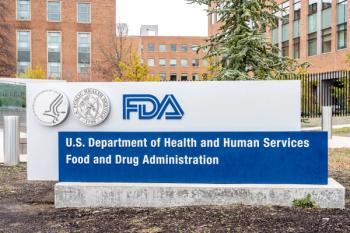
- Pharmaceutical Executive-06-01-2006
- Volume 0
- Issue 0
Global Report: People Problems
Staggering doses in clinical trials may prevent large numbers of people from experiencing serious side effects. But it presents practical and ethical dilemmas, such as determining who is going to be first in line for their dose.
In the United Kingdom, a recent case of clinical trials gone badly has drug companies and industry regulators perplexed about where to go from here.
Sarah Houlton
This particular trial was conducted at London's Northwick Park hospital. Six of the eight participants in the Phase I placebo-controlled trial were given the monoclonal antibody TGN1412, being developed by the German biotechnology company, TeGenero. All six experienced serious side effects and wound up in the intensive care unit with organ failure.
The drug, TeGenero's most advanced pipeline product, was under development for treatment of rheumatoid arthritis, leukemia, and multiple sclerosis. Unlike most antibody drugs, which have a blocking effect, TGN1412 was designed to stimulate the immune system by overriding the T-cell control mechanism. The drugs administered in the trial were contract manufactured for TeGenero by Boehringer Ingelheim's biopharmaceutical division.
As soon as the problems became apparent, the Medicines and Healthcare products Regulatory Agency (MHRA) stopped the trial and launched an investigation. It quickly ruled out contamination, or a failure in manufacturing, dosing, or protocol. But the exact nature of the problem was not determined.
Preclinical trials were carried out on rabbits and cynomolgus monkeys, the latter of which has the same target site on the T-cells as humans. TeGenero applied to carry out human clinical trials in the United Kingdom and Germany. Clearance was granted first in the United Kingdom, so the initial trial commenced there. Subjects were given one five hundredth of the dose that had shown no toxicity effects in monkeys.
Lessons Learned
The UK government is gathering a group of experts to advise on future regulation of Phase I first-in-man studies for biologics, particularly those for novel targets in the immune system. Meanwhile, MHRA has adopted interim precautionary measures.
MHRA's chief executive, Kent Woods, said the organization will adopt relevant guidance, but says there are a number of ways in which research could be adversely affected by strict regulations. "People might be reluctant to come forward and take part in clinical trials," he says. "Companies might also be apprehensive about moving to first-in-man."
Ironically, though, immediately following media coverage of TeGereno's trial, there was a flood of interest from potential clinical trial subjects. Involved parties speculate that this spike in interest might be because readers and viewers became aware of the payments associated with participating in clinical trials. "We have to be careful," says a spokesperson for the Association of the British Pharmaceutical Industry (ABPI). "We don't want people overriding the controls on how many trials they can take part in, and making a living [off] of them."
Dosing Questions
The TeGereno trial also highlights the issue of dosing—specifically, whether doses should be staggered, opposed to the current practice of dosing all subjects at the same time. Staggering doses poses practical problems, such as determining what intervals should be adopted. "Even if one person had been put in intensive care, it would still have been a disaster," Woods says. "Then there is the ethical problem of who is going to be first in line."
MHRA has not applied any moratorium to clinical trial approvals, but if any novel molecules are put forward that raise the possibility of unpredictable results, further advice will be sought.
Just two years ago, a trial like the one at Northwick Park wouldn't have required authorization from the regulating body. It was only in July 2004 that the regulations were extended to include Phase I studies in healthy volunteers. MHRA authorizes more than 1,000 trials every year, about a third of which are Phase I studies.
"There has been no incidence like this in the past," Woods said. "It is a completely unanticipated consequence set against the backdrop of an extremely large number of clinical trials. The critical thing is that we must understand what actually happened in mechanistic toxicological terms before we can work out what needs to be built into the future system to prevent similar events [from] occurring."
Sarah Houlton, PhD, is Pharmaceutical Executive's global correspondent. She can be reached at
Articles in this issue
over 19 years ago
What You Need to Know About Adaptive Trialsover 19 years ago
What Type of Brand Are You?over 19 years ago
Setting the Standardover 19 years ago
Washington Report: Promises to Keepover 19 years ago
King Without the Crownover 19 years ago
Personalized Medicine Meets the Real Worldover 19 years ago
Leadership: On the Firing Lineover 19 years ago
Thought Leader: Paul Chang, IBMover 19 years ago
From the Editor: Forecast — and Fastover 19 years ago
Meet the PatientsNewsletter
Lead with insight with the Pharmaceutical Executive newsletter, featuring strategic analysis, leadership trends, and market intelligence for biopharma decision-makers.





